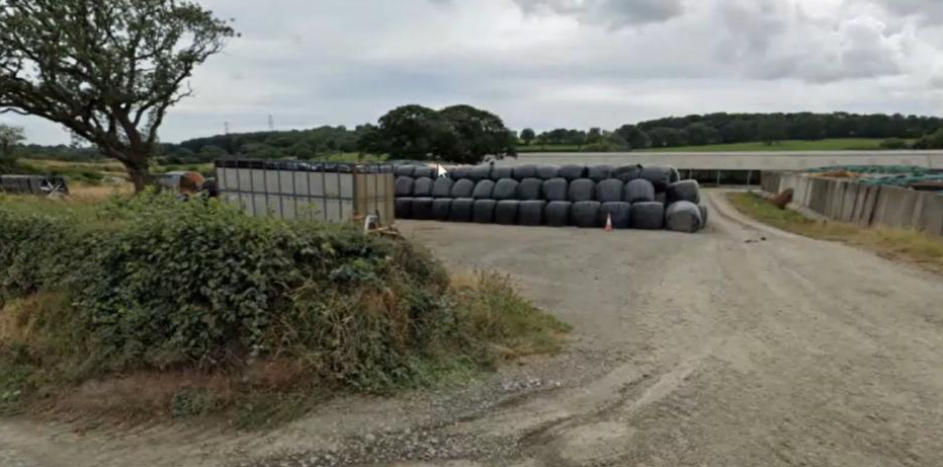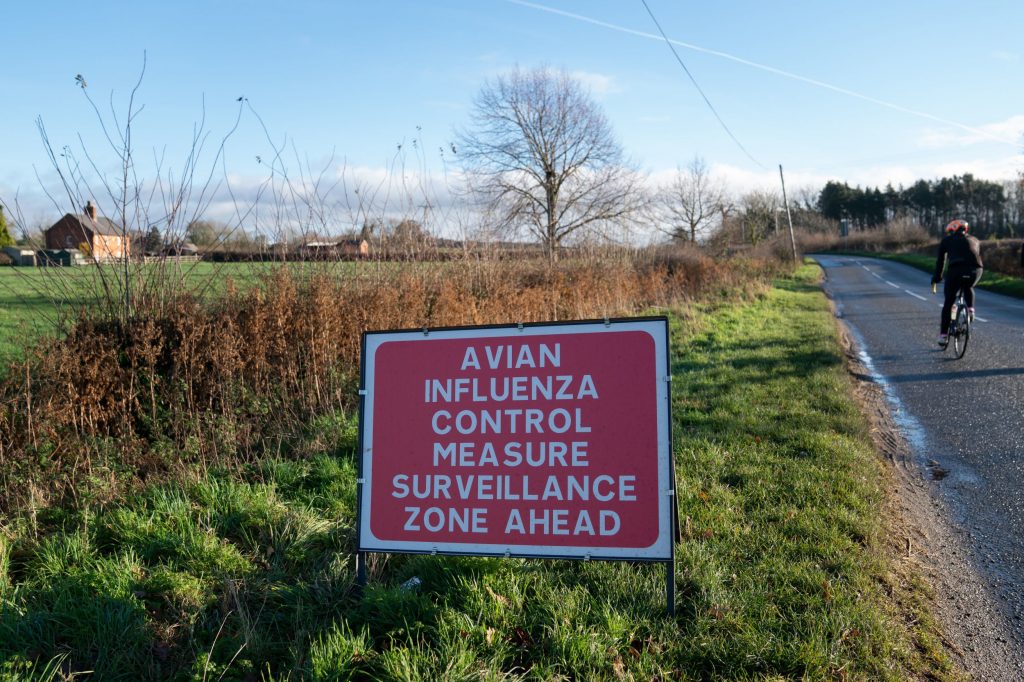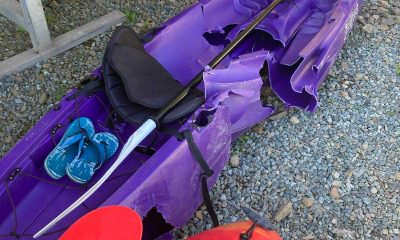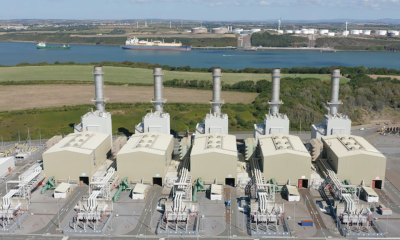Farming
Farm building scheme near Lawrenny given go-ahead by planners

AN APPLICATION for a storage building at a south Pembrokeshire farm, made by a family member of an officer on Pembrokeshire County Council’s planning service, has been given the go-ahead by the authority’s planning committee.
In an application recommended for approval at the July 23 meeting of the authority’s planning committee, Laura Elliot sought permission for the erection of an agricultural storage building at Tedion Farm, a dairy farm near Lawrenny.
The application had been brought to committee, rather than being delegated to planning officers, due to the family connection.
The farm, near to the Pembrokeshire coast National Park border, comprises 270 milking cows and dairy heifer replacements kept on the farm comprising land over 138 hectares. The farm is mainly down to grass and the cows are paddock grazed in order to utilise grass efficiency.
No objections had been received from local community council Martletwy.
A report for members said: “The application seeks consent for the erection of agricultural storage building. The erection of an agricultural building will be used to store stay, hay and farm machinery.
“The building would be located within the existing farm complex, to the north-east of the site, adjacent to the main farm dwelling. The building will measure 18 metres in length by 13.6 metres in width, with a pitched roof height of 5.71 metres.”
Approval was moved by Cllr Alistair Cameron, seconded by Cllr Brian Hall.
Farming
Farmers Union of Wales Warns: Labour’s 5G Expansion Risks Rural Blackspots

FUW Joins Landowners in Urgent Call to Pause Controversial Telecoms Reforms
THE FUW (Farmers’ Union of Wales) has warned that rural communities face worsening mobile blackspots and farmers risk losing essential income if the Labour Government expands a telecoms policy blamed for stalling Britain’s 5G rollout.
In a letter to Digital Economy Minister Liz Lloyd, the FUW aligns with landowners, investors, and property experts demanding a halt to Part 2 of the Product Security and Telecommunications Infrastructure (PSTI) Act 2022. Extending the 2017 Electronic Communications Code (ECC) would “entrench failure,” the group argues, sparking more stalled renewals, site losses, and legal battles just as Wales needs swifter rural connectivity.
The 2017 reforms empowered operators to cut mast rents—often by 90%—from hosts like farmers, councils, and NHS trusts. Far from boosting rollout, they’ve ignited over 1,000 tribunal cases since 2017, versus 33 in the prior three decades. Rural goodwill has eroded, with hosts now eyeing exits.
“Every lost mast isolates households, schools, and businesses,” the FUW states. “No public subsidy can fix this systemic damage.”
A survey of 559 hosts (via NFU, CLA, BPF) shows:
- 35% considering full withdrawal.
- 70% of expired lease holders facing operator legal threats.
Landowner Ted Hobbs in New Tredegar shares the pain: “My 1995 Vodafone lease was £3,500 yearly, renewed in 2010 at the same rate. It expired May 2025—now they demand a slash, backed by the Code. This is confiscation, not partnership.”
Labour’s push forward—despite earlier opposition and a critical consultation—ignores these red flags.
FUW President Ian Rickman adds: “Farmers hosted masts in good faith for rural connectivity. Punishing them with rent cuts sabotages Wales. Halt this now, restore trust, and incentivise real progress.”
The coalition urges ministers to reopen dialogue before deepening rural divides. Wales can’t afford more policy missteps.
Business
Large new development at one of Pembrokeshire’s biggest dairy farms approved

PLANS for a heifer accommodation building and associated works at one of Pembrokeshire’s largest dairy farms, with a milking herd of 2,000 cows, have been given the go-ahead.
In an application recommended for approval at the December 2 meeting of Pembrokeshire County Council’s planning committee, Hugh James of Langdon Mill Farms Ltd sought permission for a 160-metre-long heifer accommodation building, a slurry separation/dewatering building and associated yard areas at 1,215-hectare Langdon Mill Farm, near Jeffreyston, Kilgetty.
A supporting statement through agent Reading Agricultural Consultants said: “The holding currently has a milking herd of approximately 2,000 cows, which are housed indoors for the majority of the year, with dry cows and heifers grazed outdoors when weather and soil conditions permit.
“There has been significant investment in buildings and infrastructure at the farm over the last decade in respect of cattle accommodation, slurry storage, milking facilities, Anaerobic Digestion (AD) plant, feed storage. Recently a calf and weaned calf accommodation buildings were approved by Pembrokeshire County Council with construction almost complete.
“The unit is efficient, achieving yields of more than 10,000 litres/cow/year, with cows being milked three times/day in the 60-point rotary parlour. Langdon Mill Farm currently directly employs 21 full-time, and three part-time staff. Of these, four live on site in the two dwellings opposite the farm, with the remaining staff living in the locality.”

It added: “Although the unit has previously purchased heifers to aid expansion, the farm now breeds most of its own replacements to improve genetics and to minimise the ongoing threat of bovine tuberculosis (bTB).
“Following the completion of the calf and weaned calf accommodation buildings, the farm will be rearing all of the cattle under seven months at Langdon Mill Farm, before being transported off site to be reared at three farms in the local area. At 22-months the in-calf heifers are brought back to the maternity building to calve and then are introduced into the milking herd.”
It said the proposed building would be used by heifers between the ages of 7-22 months, the siting “directly influenced by the adjacent calf and weaned calf buildings, with livestock being moved from one building to the next as they get older”.
Approval was moved by Cllr Brian Hall, seconded by Cllr Danny Young, with Cllr John T Davies also stating his support.
“It’s common sense; the fact we approved a calf-rearing shed, it follows on you need a heifer rearing shed,” he said.
Cllr Davies later said the scheme would also support biodiversity, and, with a decline in milk prices, supporting the large-scale farm was about “safety in numbers”.
Chair Cllr Mark Carter said it was “a pleasure to be supporting the farming industry”.
Members unanimously supported the recommendation of approval.
Business
Avian flu concerns rise as fresh housing rules hit West Wales farms

Producers warned to tighten biosecurity as winter migration increases risk
POULTRY farmers across West Wales are tightening biosecurity and preparing for months of disruption as the latest wave of avian influenza brings new housing requirements and restrictions across the country.
An all-Wales Avian Influenza Prevention Zone (AIPZ) remains in force, with keepers required to follow strict disease-control measures. Mandatory housing orders are now active, meaning all poultry and captive birds must be kept indoors or under cover to reduce contact with wild birds during the peak winter migration period.

The Welsh Government said the risk of spread from wild bird populations has risen sharply in recent weeks, with cases confirmed across the UK and further outbreaks expected as colder weather pushes migratory birds into estuaries and coastal wetlands.
Local concerns in Pembrokeshire and Carmarthenshire
While no major outbreaks have been reported in West Wales so far this season, farmers say the constant tightening of rules has become part of their winter routine.
Producers in Pembrokeshire and Carmarthenshire told The Herald that rising feed costs, indoor-housing requirements and continued uncertainty around “free-range” status are putting pressure on small and medium-sized units.
One local keeper said: “When birds go inside for long periods, everything becomes more expensive — bedding, lighting, feed, labour. You also worry about the stress on the flock. It all adds up.”
Although the public health risk remains low, farmers say the economic risk to the rural sector is significant, particularly if repeated outbreaks trigger long-term culls or movement restrictions.
Background: The Capestone outbreak
West Wales has already seen how severe the consequences can be.
In September 2022, Capestone Organic Poultry Ltd, near Milford Haven, lost 130,000 organic chickens after a small outbreak of bird flu was detected in one shed. The entire flock was culled, affecting one of Pembrokeshire’s largest agricultural employers.
At the time, the business urged the Welsh Government to introduce a mandatory housing order to match measures already in place in England. Wales initially resisted housing rules, instead relying on an AIPZ and saying the scientific evidence did not yet justify compulsory containment.
The episode highlighted a long-running debate within the industry: whether early housing orders are essential to prevent spread, or whether they impose unnecessary financial strain, especially on free-range units that could lose their premium status once birds are indoors for extended periods.
That same debate has returned this winter, with ministers under pressure to balance scientific advice with the practical realities on farms.
Biosecurity rules tightened
Under current measures, all bird keepers — from major commercial producers to backyard owners — must now:
- house or net birds to avoid contact with wild birds
- clean and disinfect housing, yards, vehicles and equipment regularly
- restrict visitors and maintain movement records
- report any signs of unexplained illness, sudden deaths or drops in egg production to APHA
Failure to follow the rules can result in enforcement action, including prosecution.
The Welsh Government said the AIPZ and housing order will remain in place “until further notice”, with the situation assessed on a daily basis.
‘A difficult few months ahead’
Farmers say that, as in previous years, the biggest challenge will be uncertainty. If Wales avoids major outbreaks, restrictions may lift early. But with the UK reporting rising case numbers and Europe warning of sustained seasonal pressure, most producers are preparing for a long winter.
NFU Cymru has again urged the Welsh Government to ensure clear communication and rapid support for producers affected by culls or extended housing, warning that some family-run businesses are operating “on a knife-edge”.
For now, farmers in West Wales say they can only focus on biosecurity and hope that this year’s strain does not bring the kind of losses seen elsewhere in the UK.
-

 Crime5 days ago
Crime5 days agoMan denies causing baby’s injuries as police interviews read to jury
-

 Crime1 day ago
Crime1 day agoDefendant denies using Sudocrem-covered finger to assault two-month-old baby
-

 Crime6 days ago
Crime6 days agoMan denies injuring baby as jury hears police interview in ongoing abuse trial
-

 Crime12 hours ago
Crime12 hours agoPembroke rape investigation dropped – one suspect now facing deportation
-

 News12 hours ago
News12 hours agoBaby C trial: Mother breaks down in tears in the witness box
-

 Crime7 days ago
Crime7 days agoMilford Haven man jailed after online paedophile sting
-

 Crime2 days ago
Crime2 days agoDefendant denies causing injuries to two-month-old baby
-

 Crime1 day ago
Crime1 day agoLifeboat crew member forced to stand down after being assaulted at Milford pub




















